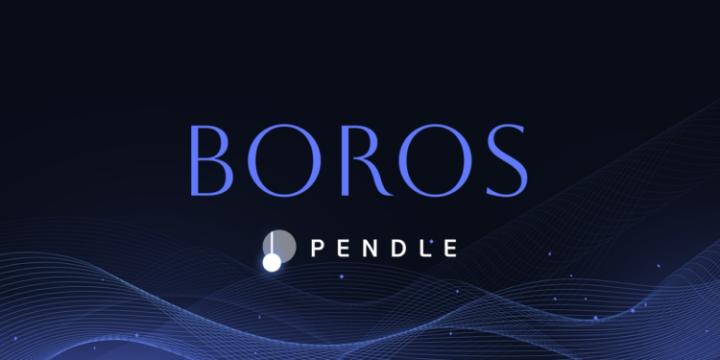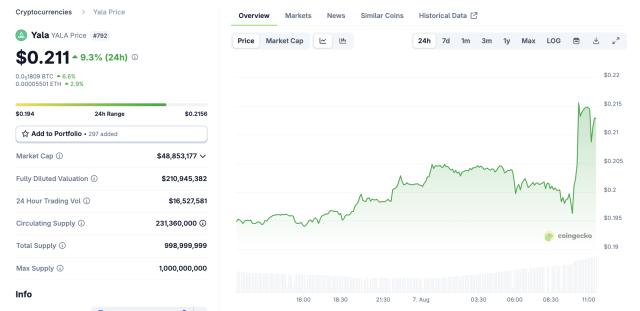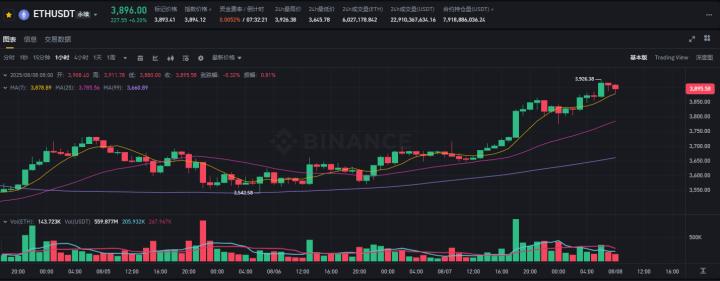Author: Alex Liu, Foresight News
Pendle is the most successful DeFi protocol in this cycle, without even needing the qualifier "one of". While many articles have explained Pendle, this piece aims to analyze the protocol's unique mechanism and value capture design from a new perspective, combining the latest developments. Readers familiar with Pendle's mechanism can skip the initial explanatory section and focus on the subsequent analysis.
What is Pendle
Pendle is a Yield Trading protocol. To explain how yield is traded, we'll use two assets from the synthetic stablecoin protocol Ethena: USDe and sUSDe as an example.
USDe is a stablecoin pegged 1:1 to the US dollar. Simply holding USDe does not generate interest, but it does produce Ethena airdrop points, which can be converted into sENA tokens after each quarterly airdrop based on the point quantity. sUSDe is the staked version of USDe, a yield-generating stablecoin with interest rates fluctuating between 5% and 15% based on market sentiment and funding rates. Holding sUSDe earns fewer Ethena points compared to USDe.
For these two assets, holding USDe generates Ethena points as yield, while holding sUSDe generates both interest and Ethena points.
Whether interest or points, they are quite "time-sensitive". Interest rates can fluctuate dramatically with market conditions, and point values are closely tied to snapshot dates and real-time token prices. Therefore, the "yield" being traded requires a specific term. It could be the yield for the next 3 months, but not for the next 300 years.
Yield is generated by the underlying asset. We call the current value of an asset that will generate yield at a certain point in the future the "principal", thus completing the three elements: principal, yield, and term.
Pendle wraps yield-generating assets into Standardized Yield (SY) tokens using a unified token standard, then splits them into Principal Tokens (PT) and Yield Tokens (YT) with a set term, making the "yield" tradable for a specific period.
[Image]
Before maturity, holding YT will earn the corresponding underlying token's yield. At maturity, the PT's value will equal the SY, while the YT's value will become zero. (For example, 10 days before the term, YT represents 10 days of underlying asset yield and has value; after maturity, it represents 0 days of yield and becomes valueless.)
For instance, 1 USDe can be wrapped into 1 Standardized Yield token USDe (Sep 2025) SY, then split into 1 USDe (Sep 2025) PT and 1 USDe (Sep 2025) YT, with their values following: 1 USDe (Sep 2025) SY = 1 USDe (Sep 2025) PT + 1 USDe (Sep 2025) YT.
[Image]
1 USDe SY's value is the same as the underlying asset 1 USDe, which is $1. For illustration, we'll set 1 USDe (Sep 2025) PT at $0.99 and 1 USDe (Sep 2025) YT at $0.01, with about 1 month remaining until maturity.
As a trader, I can now buy 10,000 YT for $100, equivalent to the yield (Ethena airdrop points) of 10,000 USDe over this 1 month. At maturity, YT becomes zero, with value transferred to unrealized Ethena airdrop points. The trader's motivation is to be long on USDe yield value, believing the Ethena airdrop value will exceed the YT purchase cost.
The ability to leverage points with small capital by using $100 to control $10,000 in point generation brought massive growth to Pendle during the previous points craze. YT trader victories are numerous: traders leveraging eETH YT recovered their entire YT cost from the ETHFI airdrop, essentially getting EIGEN tokens for free; buying YT to leverage Ethena points when ENA was $0.2, with ENA rising to over $0.6 within 2 weeks; Usual airdrop exceeded expectations, with YT purchases yielding over 10x returns.
[Image]
Pendle's "Points Market" Page
sUSDe YT holders not only receive Ethena points but also earn interest from the underlying asset. Although YT becomes worthless at maturity, holders can claim USDe yield from the underlying sUSDe asset based on actual interest rates through the Pendle contract.
There are also YT trading loss cases: leveraging points for a project that delays token launch, causing point value to be infinitely diluted; going long on the underlying yield of USDT in Aave at an implied APY of 8%, but with actual average interest rates falling to 4% due to market conditions, resulting in a 50% principal loss.
Trading requires counterparty liquidity. The YT trading boom relies on market demand for PT to support liquidity. In the previous scenario, one can buy 10,000 USDe (Sep 2025) PT for $9,900, which can be exchanged back to 10,000 USDe after 1 month. Earning 1% in 1 month is equivalent to locking in about 12% annual yield, enjoying a "fixed rate".
This is similar to government bonds, where buying a $110 face value 1-year bond for $100 guarantees a 10% annual yield upon redemption. Like bonds, the PT approaches its face value as it nears maturity and can be redeemed at par.
As the yield seller, PT holders sell the yield's "uncertainty" and lock in a "fixed rate".
Providing liquidity on Pendle is equivalent to simultaneously holding SY and PT while selling part of the YT. LPs earn fixed income from their PT portion and additional PENDLE token emissions (liquidity mining).
It's clear that Pendle offers choices for users wanting to reduce risk and increase stable returns, those willing to take risks for potential uncertain yields, and those simply seeking DeFi mining opportunities. By addressing user needs, adoption comes naturally.
Pendle's Data
Pendle's success is evident in the data. Despite last week's market downturn and the largest asset maturity in its history (meaning some users seeking stable returns realized "profits"), Pendle's TVL still reached a new high of $7 billion.
[Image]
Over 48% of Ethena assets have been wrapped into Pendle assets, reaching $4.6 billion. More than $4 billion in Pendle PT assets have been deposited as collateral in lending protocols like Aave, Morpho, Euler, and Silo. The recently launched HyperEVM-related assets attracted over $80 million in just 4 days. Despite over $1.5 billion in assets maturing mid-week, causing less than a 3% TVL decline, a large portion of assets chose to remain, demonstrating trust in the protocol.
[Image]
PT Assets Deposited in Various Lending Protocols
Crypto Profit Models
There are two most profitable business models: first, skimming like a casino, corresponding to exchanges in the crypto world; second, earning from the interest spread between loans and deposits, like banks, corresponding to lending protocols in the crypto world.
[Image]
Pendle is the 5th largest DEX on Ethereum, operating under a "fee extraction" model. For traders, the "fee extraction" model is often a zero-sum game - similar to perpetual contracts on CEX where long positions mean short positions lose, and in the long run, only the exchange continuously collecting fees is the winner.
Pendle, however, offers scenarios where all participants can profit, which I believe is its unique characteristic, or "positive externality".
Positive Externality
Pendle primarily involves 3 key participants at the user level: YT traders, PT traders, and LPs (liquidity providers). At the protocol level, it also involves collaborative protocols - Pendle can bring massive TVL improvements to partner protocols, as the Ethena example clearly demonstrates. The first thing emerging projects often do to boost TVL is to "integrate Pendle".
PT traders can actually "safely earn" fixed income, with their only risk being that the "uncertain" income they sell might be too valuable, potentially earning less but guaranteed not to lose (in coin terms, holding ETH-related YT won't reduce the held ETH quantity). PT traders voluntarily embrace "certainty" and might stack 12% fixed annual yield PTs across various DeFi protocols, potentially creating yields over 50% annually.
LPs essentially hold part of the PT, with the SY portion often receiving extremely high multiplier points from various projects. They earn fixed income while efficiently mining points through PENDLE token distribution, essentially a win-win scenario.
The only potentially losing participants are YT traders. YT traders often bet small to win big, profiting when market conditions are more optimistic than expected. The crypto industry is in a high-growth phase, constantly releasing new assets with bullish market sentiment. When an unexpected token airdrop occurs or bullish sentiment pushes actual interest rates above pricing, all Pendle ecosystem participants profit, with the cost borne by external participants. Theoretically, everyone can earn money, with revenues sourced externally - that's its beauty.
Pendle trades not just rates, but expectations. Enabling every participant to profit in a bull market exceeding expectations is its "positive externality".
PENDLE's Value Capture
Even with a unique protocol, is the PENDLE token a value token?
PENDLE token uses a ve (voting escrow) mechanism where holders can lock tokens to receive vePENDLE. Currently, all protocol profits are distributed to vePENDLE holders. Pendle charges 5% fees on all YT-generated revenues (including points, meaning vePENDLE holders receive airdrops from various tokens), and the same percentage on unredeemed SY revenues. PT and YT trading fees are also entirely allocated to vePENDLE.
Additionally, standard ve token mechanisms like LP liquidity mining boosts and voting rewards from projects provide additional incentives, generating revenue for locked tokens while reducing circulation and enhancing token demand.

According to official data, vePENDLE fees reached $2.85 million in July 2025, and even excluding the more uncertain airdrop portion, still reached $2.28 million.
As of 8 August dawn, PENDLE token broke through 5 USDT, rising over 25% in a single day, leading the DeFi sector.
Team and Financing
The Pendle team was created in 2020, with founder TN Lee previously a founding member of Kyber Network. Primarily based in Singapore and Vietnam, the team launched Pendle's first version in 2021 - a product similar to an on-chain crypto index, introducing the PENDLE token. However, this version didn't find product-market fit and wasn't considered successful.
Pendle completed a private funding round in April 2021 for $3.7 million, with investors including Hashkey Capital and Mechanism Capital, and raised an additional $11.83 million through IDO at $0.797 per token.

Pendle Founder TN Lee
After the market peaked in 2021 and quickly entered a bear market, the Pendle team, with their keen insight and forward-thinking, worked hard to build and quickly transform, ultimately launching the highly successful Pendle V2 in 2022, reviving the project across market cycles.
In July 2023, Pendle launched on Binance Spot via Launchpool. A month later, Binance Labs (now Yzi Labs) announced investment in Pendle.
Simple Future Outlook
Pendle currently has no significant competitors. Whether Spectra on EVM or RateX on Solana, similar products lag far behind in liquidity, capital scale, and protocol integration. As Pendle establishes more ecosystem interactions with top protocols like Ethena and Aave, its track dominance will become increasingly unshakeable.
Contract safety proven over time, accumulated brand effect, and user trust give us reason to believe that traditional capital (TradFi) would likely choose Pendle as a first option for entering the yield trading track.
Additionally, Pendle's latest funding rate trading protocol Boros, launched yesterday, is seen as the next major growth point. The funding rate market is considered to have $200 billion in open interest and over $300 billion in daily trading volume potential. Within 24 hours of launch, Boros achieved an impressive $15 million in open interest and $36 million in nominal trading volume.
When I first introduced Pendle in March 2024 (when PENDLE was $1.2), I wrote that yield and risk are finance's core factors, and balancing their transfer is an eternal strategy. Through decentralized magic, Pendle makes this happen on-chain, continuously bringing potential external revenues into the ecosystem, achieving a positive-sum game and gradually becoming an indispensable DeFi infrastructure with unlimited potential.
Now, 1.5 years later, Pendle has become an indispensable DeFi infrastructure, with its token price surpassing many "ghost chains". In the foreseeable future, Pendle will continue rapid growth, leading the DeFi track.
Disclaimer: The author holds PENDLE tokens, reaching disclosure standards.








